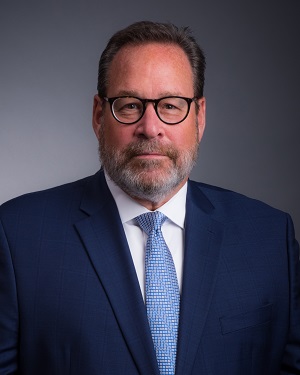By Dan Van Alstine, Ruan President and Chief Operating Officer
 The lack of a clear investment in our nation’s infrastructure is one of the most critical issues impacting the transportation industry and the motoring public today. Crumbling roadways, unsafe bridges, and a lack of modernization are factors professional drivers and all users of our road network must deal with every day. America’s infrastructure is stuck in the past in both rural and urban areas, on state highways and our interstate system. The absence of necessary investment costs our industry time, money, and importantly, creates safety concerns with every mile. According to the American Society of Civil Engineers, U.S. infrastructure was given a grade of C- and has a “strong risk of failure.”
The lack of a clear investment in our nation’s infrastructure is one of the most critical issues impacting the transportation industry and the motoring public today. Crumbling roadways, unsafe bridges, and a lack of modernization are factors professional drivers and all users of our road network must deal with every day. America’s infrastructure is stuck in the past in both rural and urban areas, on state highways and our interstate system. The absence of necessary investment costs our industry time, money, and importantly, creates safety concerns with every mile. According to the American Society of Civil Engineers, U.S. infrastructure was given a grade of C- and has a “strong risk of failure.”
The definition and scope of infrastructure has led to bipartisan debate. Many now see that infrastructure isn’t just roads and bridges. Our digital dependency and multi-modal distribution capabilities broaden the need, and infrastructure now includes energy, railways, internet/broadband, airports, schools, public transit, drinking water, waste management, and more. Modern interpretations also include things such as hospitals and health care, green energy, childcare, and tackling income inequality in schools and urban areas. All of these factors impact the transportation industry across the board—from the obvious roadways to improved broadband for better technology and access to crucial, life-improving services individuals and families use every day.
We need to invest in infrastructure because transportation is the lifeblood of the nation. In our industry, we know truck drivers, technicians, and warehouse personnel are real-life superheroes. They enable the standard of living we all enjoy—delivering critical products and services to our stores, hospitals, gas stations, factories, building sites, and more. But our failing infrastructure is limiting their ability to do this critical work efficiently and safely. Drivers spend valuable hours delayed in congested traffic, contributing to wasted fuel, additional vehicle wear and tear, and stress on our environment. At a time when trucking capacity is tight, demand is accelerating, and professional drivers are in short supply, these valuable hours lost threaten our nation’s supply chains and the ability for our economy to grow and compete with other nations. Moreover, drivers don’t have enough safe places to park for breaks and layovers, and trucks sometimes sit idle in maintenance shops after falling victim to potholes and other roadway failures, further limiting the industry’s ability to move goods efficiently.
Negotiations between Democrats and Republicans have continued for months. President Biden initially proposed a $2.3 trillion infrastructure budget as part of his American Jobs Plan, which includes billions in funding for conventional needs such as roads, bridges, and broadband, while also allocating funds for improving drinking water infrastructure, renewing the electric grid, and modernizing federal facilities. Senate Republicans originally proposed a counteroffer just shy of $600 billion. As negotiations continue, both sides have adjusted their offers to be around $1 trillion. Major differences remain, however, in how those funds would be used. Republicans believe the majority of any infrastructure investment should be limited to roads, bridges, rails, and transportation, while Democrats are committed to funding clean energy and a $400 billion program to support care for the elderly and disabled.
Another significant obstacle to overcome is how to fund the investment. President Biden has proposed raising corporate taxes, which Republicans have drawn a “red line” and strongly oppose. Instead, Republicans suggest using unspent funds from the American Rescue Plan, which provides COVID-19 relief, but Democrats have rejected this idea.
It is my sincere hope that our government leaders will find common ground. The situation is dire. Potholes, cracked bridges, and deteriorating highways are indiscriminate of political party affiliation. We need to put party politics aside and provide the infrastructure investments that are so critical to our country—and not just to the transportation industry. The American people will reap all the same benefits of travelling safely and efficiently. Funding will create more jobs. Improved and broadened internet will afford educational, vocational, and employment opportunities to many Americans living in rural areas. Construction, metals, electric, and many more industries will be positively impacted through modernized systems and job creation. In fact, according to the Business Roundtable, an infrastructure investment increase of even 1 percent of GDP would add 1.5 million jobs to our economy.
Simply put, everyone in our nation will benefit from an infrastructure investment that would lead to more jobs, safer roads, better water, faster internet, greener energy, and a cleaner environment. The time for our political leaders to act is now. It is job one!